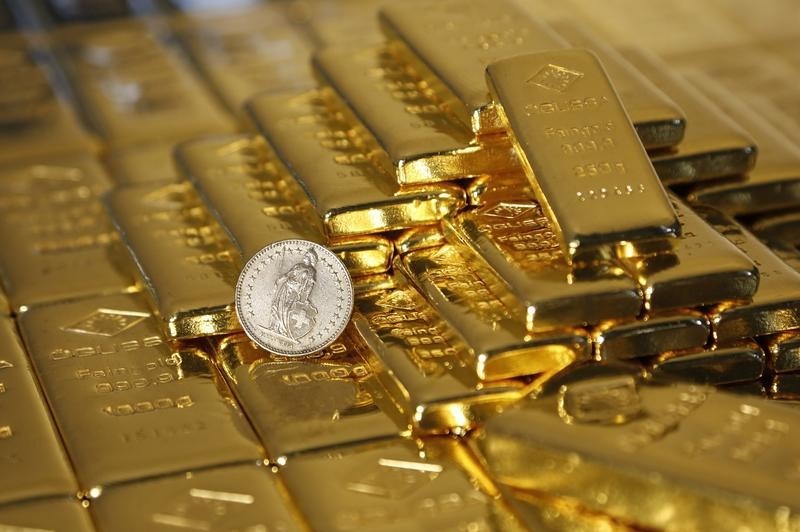By Geoffrey Smith
Investing.com -- Gold prices hit their highest in three weeks on Friday, rising back above $1,750 an ounce after another raft of dismal economic data underlined the limited scope for alternative havens such as bonds to offer a significant premium for the foreseeable future.
By 11:30 AM ET (1530 GMT), gold futures for delivery on the Comex exchange were up 0.7% at $1,753.30 a troy ounce, having earlier hit an intra-day high of $1,756.80. Spot gold was up 0.8% at $1,743.63, on course for a weekly gain of nearly 2.5%.
Silver outperformed sharply, bringing the gold-silver price ratio down to its lowest in over two months. At over 100, the ratio is still above historical norms that have held for over a century, suggesting that the arbitrage has further to go, one way or the other.
Silver futures rose 4.7% to $16.92 an ounce, while platinum futures had their best day in weeks, rising 5.1% to $808.35 an ounce.
“We believe that several factors are responsible for the surge in gold and silver prices,” Commerzbank (DE:CBKG) analyst Carsten Fritsch said in a note to clients. He cited speculation about U.S. interest rates turning negative, and the apparent dwindling of hopes for a rapid recovery after Federal Reserve Chairman Jerome Powell’s comments earlier this week.
Data released earlier showed both U.S. retail sales and industrial production falling at record pace in April under the impact of a nationwide patchwork of lockdown orders, while similar figures released by China earlier in the day suggested that the recovery – especially for consumers – will be slow and uneven.
Chinese retail sales were still down 7.5% year-on-year, a month after the country lifted most of its lockdown.
“It is possibly beginning to become apparent that the scars of the ‘Covid Depression’ could be every bit as deep as those from the Global Financial Crisis, thus casting a shadow across the global economy throughout the decade which has only just begun,” said Mark Dowding, chief investment officer with Bluebay Asset Management in emailed comments.
“We do not think that we have seen an end to policy easing measures,” he added, noting that the ECB would “certainly” expand its bond-buying at the next opportunity.
Against that background, investors have piled into gold-backed exchange-traded funds in the last two months, and Fritsch noted that those inflows continued this week, citing data showing net purchases equivalent to 15 metric tons on Thursday alone. Over the last 15 trading days, cumulative inflows have come to 110 tons, he said.
